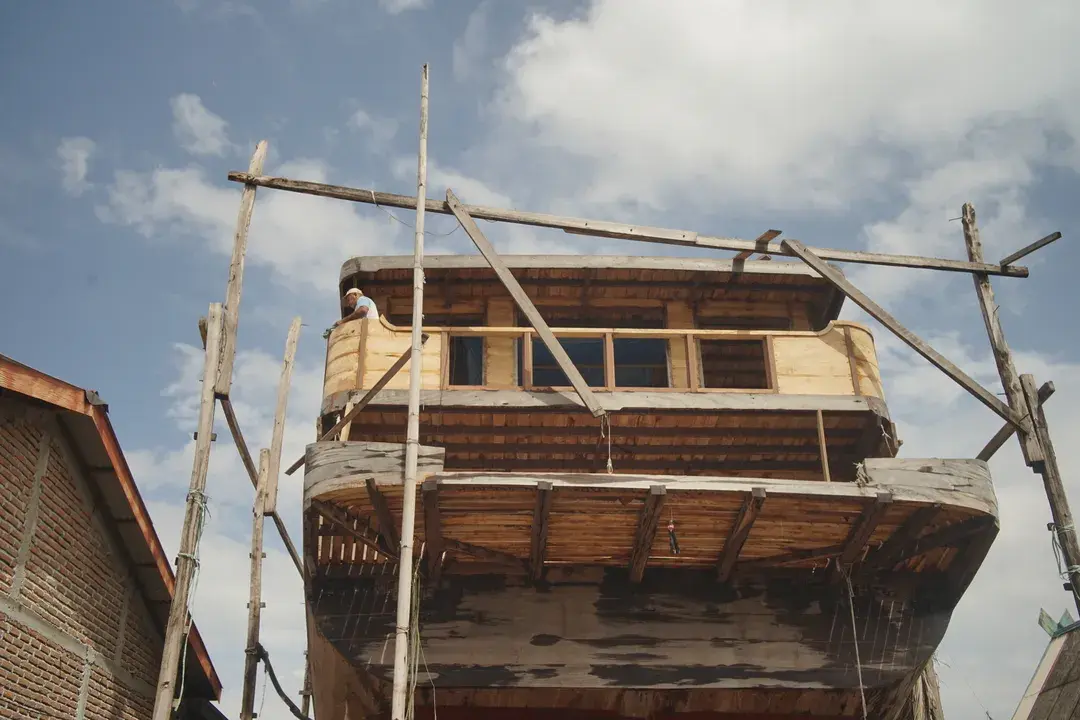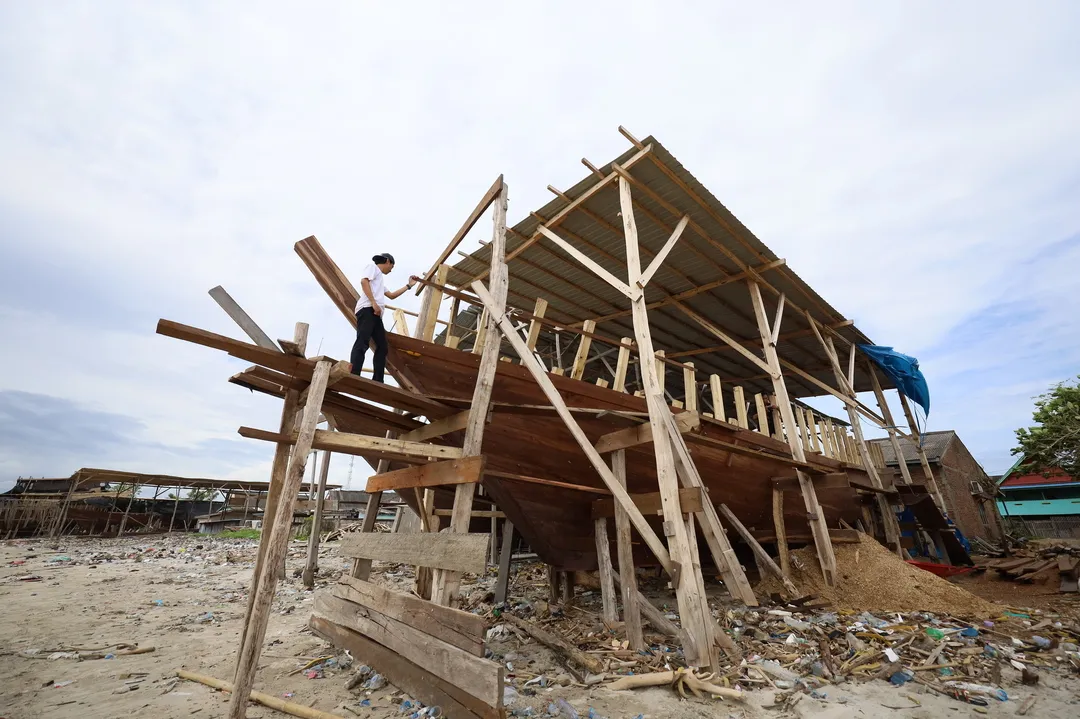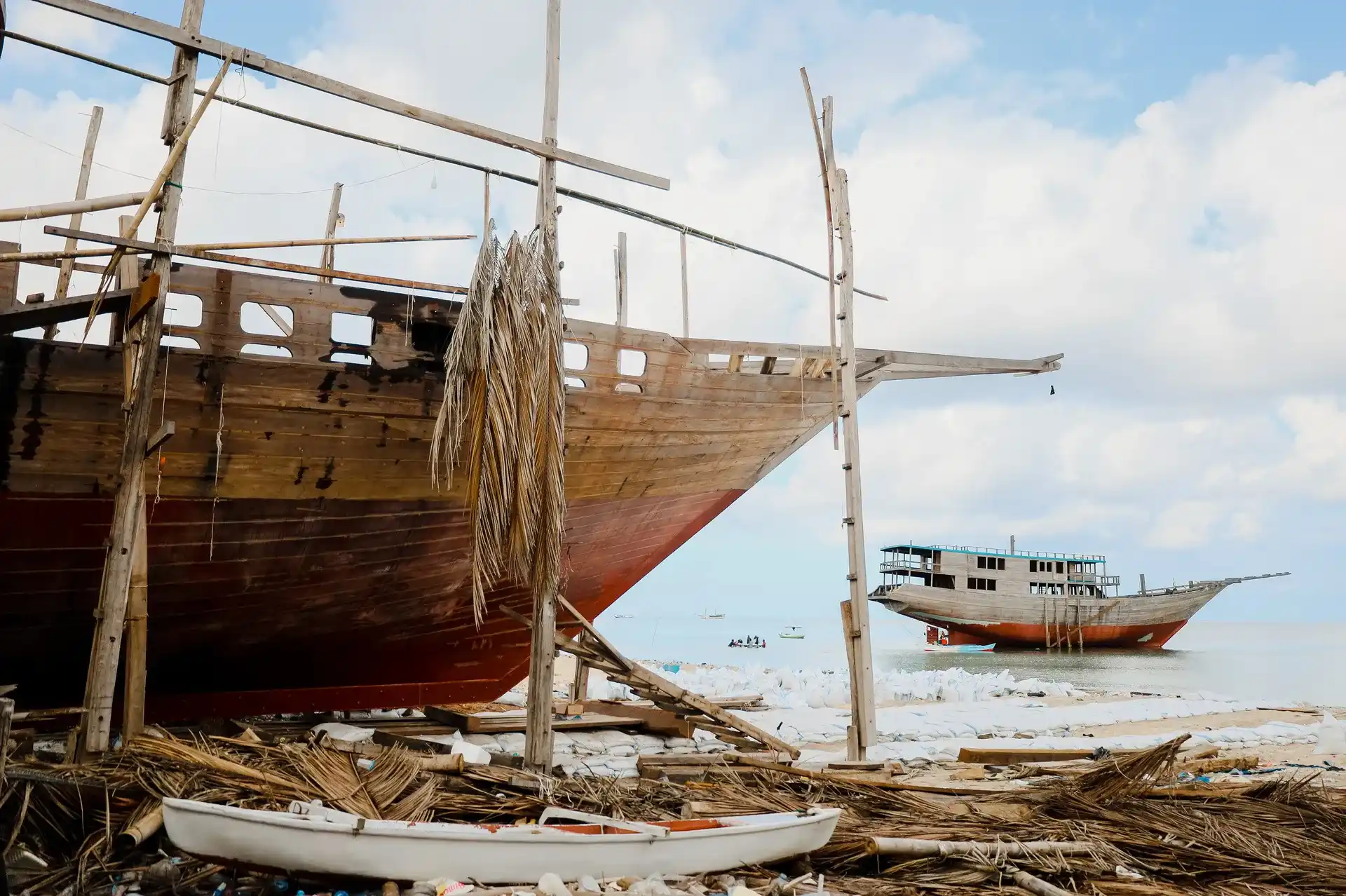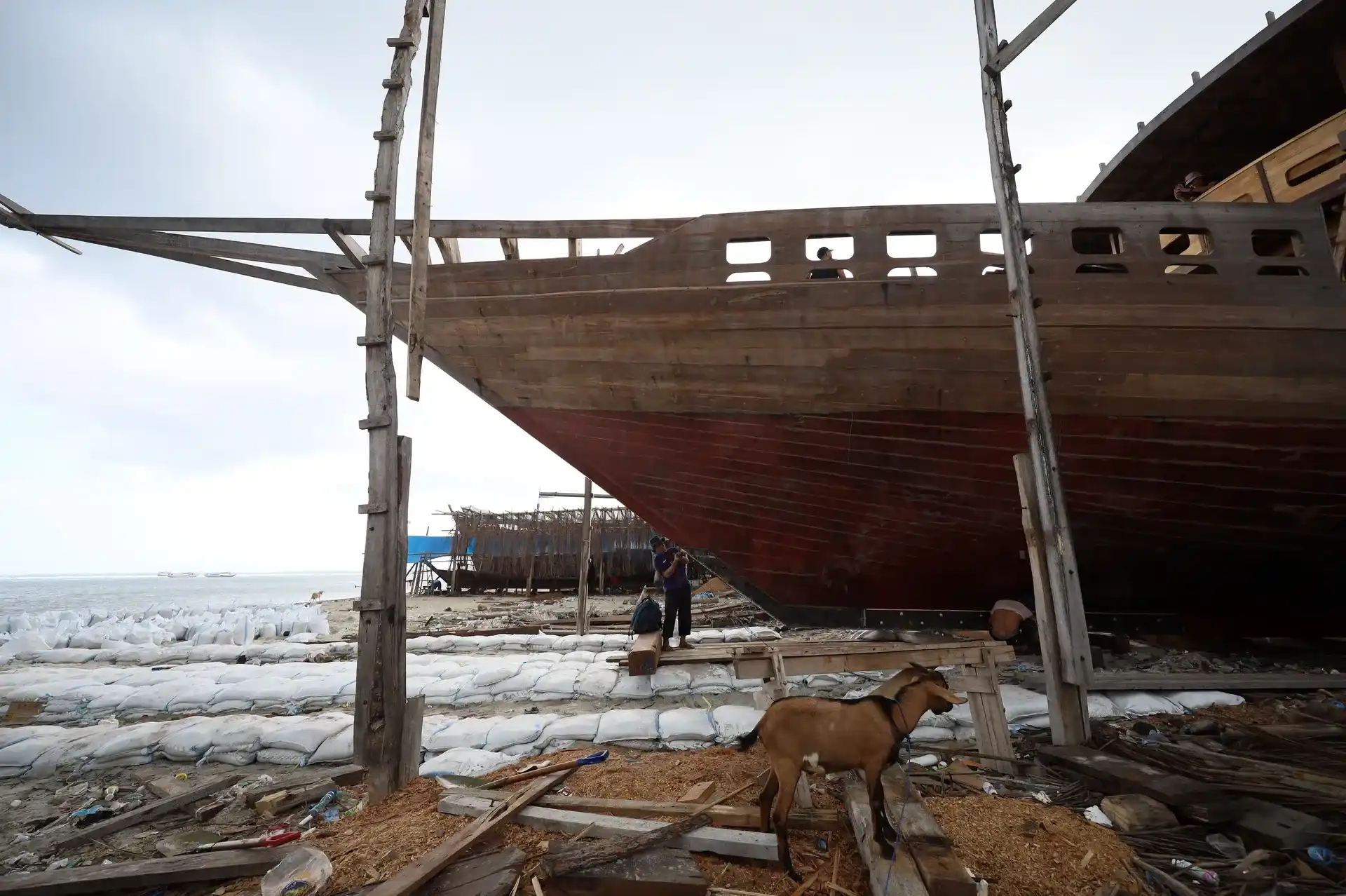Phinisi Boat Building Tradition and Market in Indonesia

The Phinisi boat building tradition and market showcase how ancient maritime craft from Bulukumba, South Sulawesi, meets modern global demand. These handmade vessels now serve tourism, luxury, and cultural heritage. The tradition lives on—adapted, but never abandoned.
Curious how it all continues? Let’s dive in.
How are Phinisi Boats Traditionally Built?
Phinisi boats are deeply rooted in the seafaring legacy of the Bugis and Makassar peoples of South Sulawesi, whose ancestors were renowned sailors and shipbuilders for centuries.
These vessels are still constructed today using traditional methods passed down through generations—without blueprints or written plans.
Instead, the entire process is guided by the intuition and memory of a master builder, known as a punggawa, supported by oral tradition and communal knowledge.
Read Also: How Long to Build a Phinisi? Inside Indonesia’s Timeless Craft
Key aspects of the traditional building process include:
1. Manual Craftsmanship
Builders rely on hand tools like adzes, chisels, and saws to shape the timber—usually ironwood, teak, or bitti—into strong, sea-worthy frames.
2. No Blueprint Design
Construction is done from memory and visual estimation, using techniques that have been refined over hundreds of years.
3. Sacred Rituals and Ceremonies
Every Phinisi begins with a keel-laying ceremony, where offerings are made to bless the boat’s soul.
As the boat progresses, builders observe taboos, perform a mast-raising blessing, and conclude with a launching ritual, inviting harmony between vessel, sea, and spirit.
Who Builds the Phinisi? Roles & Community
Phinisi construction is a deeply communal effort, led by experienced artisans and supported by an entire village network.
At the heart of it is the punggawa, the master builder, who holds the vision and traditional knowledge passed down through generations.
This individual is responsible not only for the technical execution but also for guiding the spiritual and ceremonial aspects of construction.
Here’s how the community comes together in the process:
1. Punggawa (Master Builder)
Oversees every stage, from timber selection to final launch. Their knowledge is rooted in oral tradition and decades of hands-on experience.
2. 30–50 Skilled Craftsmen
Each Phinisi typically requires a large team—including carvers (who decorate the ship with symbolic motifs), riggers (who handle sails and masts), and joiners (who shape and connect the wooden frames).
3. Family-Based Knowledge Transfer
Many of the builders come from families who have worked on Phinisi for generations. Skills are taught informally, often beginning in childhood, preserving both technique and cultural values.
What Kind Of Wood is Used For Phinisi?
Phinisi boats are crafted with carefully chosen local timbers that not only provide strength and seaworthiness but also carry cultural and spiritual significance. The selection of wood is guided by tradition, environmental availability, and the function of each part of the ship.
Here’s a breakdown of the key materials used:
1. Teak (Jati)
Highly durable and resistant to pests and decay, teak is often used for decks, interiors, and finishing elements. Its fine grain and rich color make it both practical and beautiful.
2. Ironwood (Kayu Ulin)
Known locally as “the wood that sinks,” ironwood is extremely dense and water-resistant. It’s ideal for structural components like the keel, ribs, and frame of the ship.
3. Bitti Wood (Kayu Bitti)
Native to Sulawesi, bitti wood is prized for its balance of flexibility and strength, making it perfect for the curved hull and framing sections of a Phinisi.
4. Mangrove Wood (Rhizophora spp.)
Traditionally used in small parts such as wooden pegs or lashings due to its rot resistance and availability near coastal areas.
Read Also: How Indonesia’s Traditional Boat Builders Are Preserving Culture
Additional materials and tools include:
1. Natural Sealants
Cotton fibers, tree resin, and natural oils are used to seal joints and prevent leaks.
2. Traditional Tools vs. Modern Additions
While adzes, chisels, and handsaws remain essential tools, some builders now integrate modern drills or sanders—though always under the guidance of traditional methods to preserve authenticity.
Why Is The Phinisi Boat Sacred?
The Phinisi is more than a vessel—it is a living symbol of ancestral legacy and maritime spirituality for the Bugis and Makassar people. Every stage of its creation is infused with rituals, taboos, and deep respect for the sea and nature.
Here’s why it holds sacred value:
1. Rituals and Taboos Tied to Cosmology and Nature
The boatbuilding process follows traditional cosmology. Builders consult elders to choose auspicious days for laying the keel, raising the mast, and launching. Certain directions and actions are avoided to prevent bad luck or spiritual imbalance.
2. Belief That the Boat Has a Soul
The Phinisi is treated as a living being—its keel is considered the spine, its body the vessel of spirit. Sacred offerings (such as eggs, coins, or rice) are placed during the keel-laying to “awaken” the boat and ask for protection at sea.
3. Community Participation During Ceremonies
Boat launches become communal rituals involving music, prayer, food, and festive gathering. These events not only honor tradition but strengthen the bond between builder, community, and sea.
The Phinisi Boat Market: Local to Global
The market for Phinisi boats has evolved dramatically, moving from functional coastal use to global luxury demand—all while preserving traditional methods of construction.
Here’s how the market flows from local roots to international waters:
1. Traditional Use: Inter-Island Trade, Cargo, Fishing
Originally, Phinisi boats were built by Bugis and Makassar seafarers to transport spices, timber, rice, and other goods between Indonesian islands.
Their durability, speed, and large cargo capacity made them essential to local economies and maritime trade.
2. Modern Markets: Luxury Tourism, Liveaboards, Charters
Today, Phinisi boats have found new life as high-end liveaboard vessels for tourism. Their handcrafted wooden design, elegant silhouette, and spacious decks make them ideal for diving expeditions, boutique cruises, and floating resorts—especially in marine destinations.
3. Demand in Komodo, Raja Ampat, and Overseas Buyers
The demand for authentic Phinisi yachts is highest in world-renowned diving hotspots like Komodo National Park and Raja Ampat.
International buyers and tour operators are also commissioning Phinisi builds from Bulukumba shipyards for use in the Maldives, Thailand, and the Mediterranean.
Read Also: How Wooden Boats Are Made in Indonesia: A Step-by-Step Look at a Living Tradition
Build Tradition, Sail Legacy
The Phinisi boat building tradition and market show how Indonesia’s maritime heritage continues to shape the present.
Each vessel is not just a mode of transport—it’s a work of art, a cultural story, and a seaworthy soul.
Whether you're a traveler, dreamer, or future boat owner, now’s your chance to step into this legacy.
Ready to build your own Phinisi or witness the craft up close? Start your journey at Riara Marine, where heritage meets hands-on experience.
Experience the Phinisi Boat Building Tradition at Riara Marine
Step into the heart of Indonesia’s maritime legacy at Riara Marine in Bulukumba, where the Phinisi boat building tradition and market come to life. Here, you don’t just observe—you immerse.
- See real master craftsmen at work using techniques passed down through generations.
- Touch the timber that becomes part of a sacred, sea-bound vessel.
- Join workshops to shape, carve, and learn directly from the builders.
- Witness the full journey—from raw wood to ready-to-sail Phinisi.
Whether you’re a cultural voyager or a future boat owner, Riara Marine offers a one-of-a-kind experience you won’t find anywhere else.
Book your visit or workshop now and become part of a legacy that still sails strong today.



